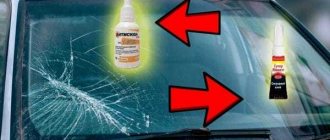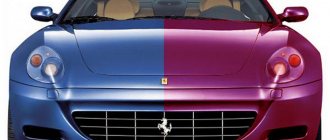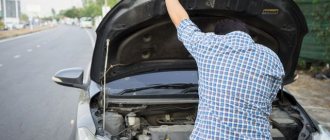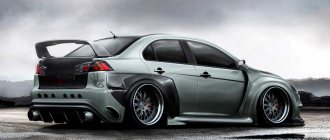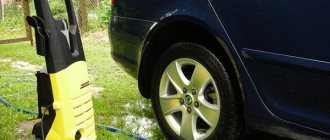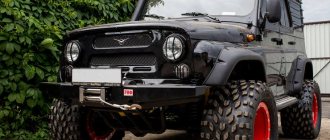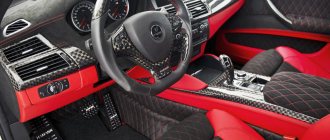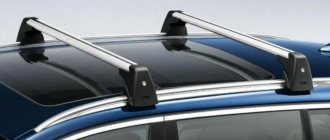Welcome to the kuzov.info blog!
Today we will look at the features of using anti-gravel composition.
Anti-gravel coating is very effective when used inside wheel arches and on body sills. Sometimes it is applied to other parts of the body, for example, the lower parts of the doors. This is a coating that remains plastic after drying.
It consists of synthetic polymer and rubber, as well as anti-corrosion additives.
The anti-gravel coating is applied using a special gun connected to a source of compressed air, or with a spray can. The coating is obtained with coarse shagreen.
The spray pressure should be 4–7 bar. Do not exceed the permissible pressure, otherwise the cylinder may “explode”. This is not dangerous to health, but it can cover everything around with anti-gravel composition.
The shelf life of the anti-gravel composition in cylinders is not long, no more than a year. In fact, it is better for anti-gravel to be stored for no more than 6 months. It is better to check the manufacturing date of this product when purchasing as it is quite important.
If the shelf life is greatly exceeded, the composition inside the cylinder turns into a difficult-to-spray mass. Heavier particles settle to the bottom and are practically impossible to mix.
What does anti-gravel coating provide?
You need to understand that different manufacturers make anti-gravel compounds of different quality and composition. High-quality modern compounds do not contain bitumen and have the following properties:
- good corrosion protection
- resistance to non-aggressive acids and salts
- high resistance to impacts from small stones
- reduces noise
- reduces vibrations
- provides protection against engine oil, water and fuel
Primer-enamel for rust 3 in 1: features and application
The 3-in-1 rust enamel primer is an effective means of prevention and long-term protection against corrosion for steel and galvanized metal structures. The components included in this coating ensure the chemical transformation of rust into the soil, thanks to which it can be applied to the metal surface over the rust, which helps reduce the cost and time of work.
The resulting coating protects the metal surface from moisture, dirt, chemicals, and petroleum products, while withstanding significant temperature changes.
The numbers “3 in 1” mean that the coating performs three functions: 1. A rust converter that reacts with oxidized metal and stops the development of corrosion. 2. Primer that has good adhesion to the metal surface, including galvanized and stainless steel structures. 3. Durable enamel, resistant to scratches and various impacts.
Advantages of primer-enamel 3 in 1
Let's consider the main characteristics that make the use of this coating profitable and convenient:
- Quick application in 1 pass.
- Low consumption per 1 m2.
- Can be applied at temperatures as low as -20 C.
- Fast drying time.
- Tinting in the required colors according to RAL (white, gray, black, blue, green, red, brown), providing a beautiful appearance.
- Possibility of use without additional finishing coating.
- Possibility of application by any available method: brush, roller, airless spray.
- Resistant to temperatures from -50 to +100 C.
- For building metal structures, KRON PR primer-enamel can be used as a primer coating, optimized for subsequent application of fire-retardant paint on metal.
Below we will look at the performance and characteristics of 3 in 1 primer-enamel using the example of the KRON PR composition.
Application restrictions
It is not recommended to use enamel primer:
- For application over scale on metal.
- On top of loose rust.
- For painting metal structures or industrial equipment exposed to extreme heat.
- For application on nitro varnish coatings or old paint layers.
- For application to surfaces in contact with food or drinking water.
Application conditions
Rust enamel primer is intended for exterior, outdoor and interior work, and is applied under the following conditions:
- Temperature range: -20 C to +50 C.
- Air humidity: not higher than 85%.
- Application on surfaces with traces of moisture, ice, snow or frost is not allowed.
- The structures being treated must be protected from rain and snow.
- The surface for applying primer-enamel must be dry, free of fragile rust, old paint and varnish coatings, dirt, grease and dust.
Let's take a closer look at preparing the metal surface for applying primer-enamel, since the durability of the coating depends on the quality of this work.
Surface preparation of metal structures
The name primer-enamel does not imply that it can cover and neutralize any rust. Before applying primer-enamel, loose, fragile and flaking rust must be removed from the rusted metal surface using metal brushes, grinding machines or abrasive jet cleaning.
In the same way, the metal surface must be cleaned of old paint and varnish coatings, including anti-corrosion, fire-retardant or decorative ones.
Degreasing: removal of grease, oils, grease, dirt is carried out using washing solutions or solvents and wiping materials. When washed with water, its residues are removed with squeegees, compressed air, and construction hair dryers.
Dust and other foreign particles are removed using compressed air.
Control of surface cleaning of metal structures is carried out visually.
Preparation of the composition and how to dilute the primer-enamel for rust
Before use, the composition must be thoroughly mixed until completely homogeneous. In this case, there should be no sediment left at the bottom of the container.
To achieve the required degree of viscosity, you can dilute the enamel primer over rust using the following solvents:
- orthoxylene,
- R-646.
It is allowed to add solvent in an amount of no more than 5-7% by weight of the primer-enamel.
Rules for applying primer-enamel to a metal surface
1. Primer-enamel can be applied to the surface of metal structures in one of the following ways: - using a brush or roller, - using a pneumatic spraying apparatus, - using airless spraying units. 2. The composition can be applied in 1 or 2 layers. 3. When applied with a brush or roller, the thickness of one layer of primer-enamel is 35-45 microns. 4. When applied by airless spraying, the thickness of one dry layer is up to 120 microns, due to the high amount of dry residue. 5. Before applying the next layer, the previous layer must be completely dry. Drying time should be at least 4 hours, for a temperature of +20°C and humidity up to 75%. As the temperature decreases or humidity increases, the drying time increases.
Consumption rate of primer-enamel 3 in 1
Primer-enamel for rust 3 in 1 has the following consumption rates per 1 m2, depending on the method of application to the metal and the thickness of the dry layer:
- application by brush or roller, for a dry layer thickness of 20-30 microns: 80 g.
- application with a spray gun, for a dry layer thickness of 40 microns: 100-120 g.
- application by airless spray, for a dry layer of 60-80 microns: 250-300 g.
These figures do not take into account losses during painting.
If you have questions, you can ask them in the online chat or by phone +7 (495) 799-97-05.
The instructions apply to 3 in 1 primer-enamel for metal KRON PR.
You may also be interested
| Fire retardant treatment: preparatory work |
| Technology for applying fire protection to metal structures - instructions for processing with water-based fire retardant paint |
| Instructions for applying frost-resistant fire retardant paint KRON SW - fire protection of metal at subzero temperatures |
| Passive fire protection of cables with thin-layer fire-retardant coatings |
| Anti-corrosion protection and treatment of metal structures: how to choose a coating? |
How to prepare a surface for applying an anti-gravel compound?
Before applying the anti-gravel coating, you need to coat the joints and welds with seam sealant.
It is important to properly prepare the surface before applying the anti-gravel coating. There should be no rust left. Sandblasting is perhaps the best way to prevent corrosion, but you can also use wire attachments on a drill and grinding wheels on an angle grinder. For more details, you can read the article “removing rust from a car body.” The surface must be washed, dried thoroughly and degreased.
Before spraying anti-gravel, you need to coat the welds and joints with a brush with a special joint sealant, and you can also apply primer with zinc.
It is necessary to cover adjacent surfaces using covering material and masking tape.
In case of application on a paint coating or acrylic primer, matting under anti-gravel can be done with sanding paper from p240 to p600.
Surfaces that are not subject to anti-gravel application must be covered with masking tape and covering materials.
In general, you need to prepare the surface as for painting.
How to apply anti-gravel coating?
Before use, you can dip the anti-gravel bottle into a bucket of hot water and leave for a few minutes. The composition will become more fluid and will mix better when shaken and sprayed.
Shake the can for 3 minutes before use.
The anti-gravel compound can be applied with a brush or roller, but the best option is using compressed air and a special gun.
The gun must have a 4mm nozzle. Apply at a pressure of 4–7 bar.
The temperature during application should be from +10 to +25.
When spraying, keep at a distance of approximately 20 cm.
After use, turn the can upside down and spray until clean air comes out.
First, a thin layer is applied, then the remaining layers create the desired structure and film.
Apply 2–3 layers. The break between layers is 2–5 minutes. After each layer you need to shake the can.
The optimal thickness of the anti-gravel coating is 1 mm.
Do not spray onto exhaust system or engine components.
Drying time at 20 degrees Celsius: after an hour - it stops sticking, after two hours - it can be coated with paint.
After complete drying, the unpainted anti-gravel coating becomes matte.
Methods of car anti-corrosion treatment
Methods of various anti-corrosion treatment of the body
Experts distinguish between two main methods of anti-corrosion treatment of cars:
- air;
- airless.
The first method is chosen, as a rule, for hidden cavities in cars. A sprayer with a pneumatic pump is used here. It has two channels - one for anticorrosion, the other for air. These 2 streams are supplied under pressure, mixed upon exit and create a beam in the form of a mist of small particles . This method is ideal for internal cavities; products with good fluidity are used for its implementation. A mist of fine particles applies well to all areas inside the cavities of the machine - and the thickness of the spray can be adjusted. All the most inaccessible areas are treated very effectively in this way.
Additional holes can be drilled to process cavities. Nozzles are inserted into these holes, through which the material is supplied. Nozzles can be flexible or metal. Metal ones are used if it is problematic to introduce the product through a flexible one. As mentioned above, substances with high fluidity are used here to increase efficiency. The entire space inside the cavity is filled with a thick cloud. After it settles on the entire surface, something like a protective film is formed inside, which prevents the formation of rust spots.
Technology for anti-corrosion treatment of wheel arches
The second method is chosen for spraying material on external areas - thick varieties of anti-corrosion are well suited for it. It is supplied under pressure to the nozzle - the thickness of the spray depends on the pressure. The equipment here consists of the following elements:
- compressor;
- High pressure pump;
- spray;
- hose.
The pump makes the material supply pressure even higher. Its design includes a body and a tube from which the substance is supplied into a reinforced channel to enter the sprayer. This method is chosen for the body, bottom and sills of the car . Experts recommend choosing high-viscosity anti-corrosion agents for these areas - in this case they are more effective than liquid ones.
Repeating the texture of the factory coating
You can first apply an anti-gravel composition to the cardboard and compare it with the original, factory texture.
Different structures of anti-gravel coating can be achieved due to:
- change in distance to surface
- pressure change
- changing application speed
To avoid too large shagreen, you can dilute the anti-gravel composition with a thinner.
Application using an aerosol can
Shake the can thoroughly before applying and between coats.
You need to spray at a distance of 30–35 cm. This will prevent the appearance of unwanted bubbles. Considering the smaller thickness of the coating when spraying with an aerosol can, at least three layers must be applied.
After completing the spraying, you need to turn the can upside down and spray until clean air comes out. This will clean the canister nozzle.
Can anti-gravel coating be painted?
If applied incorrectly, anti-gravel coating often turns out uneven and may have pores. Also, if the storage period and conditions are violated, it will be impossible to mix the composition well and it will not be sprayed correctly, leaving pores. To ensure that the surface is protected from moisture penetration, it is better to paint the applied anti-gravel coating with paint or varnish.
Painting will extend the service life of the anti-gravel coating and add decorative properties.
There are paintable and non-paintable anti-gravel compounds.
Modern anti-gravel compounds contain synthetic polymers and do not contain bitumen, which makes it possible to paint them after drying.
To ensure that the paint coating will adhere to the anti-gravel coating, the anti-gravel container must bear the inscription Overpaintable, indicating that paint can be applied over the coating.
You can paint after 2 hours; in the case of water-soluble paints, you need to wait 24 hours.
After painting anti-gravel, the surface is better washed during use and does not change color.
One of the reasons for painting is the need to match the color with the body.
Types of pistols
Due to the fact that modern industry offers car enthusiasts a very wide selection of anticorrosion agents, each of which has its own characteristics, the equipment for applying them may have different characteristics. The products have different viscosities, can be designed to treat open areas or hidden cavities, and have different application conditions .
There are three main types of anticorrosive guns:
- for wax products;
- for anti-gravel;
- universal equipment.
It is logical that the latter type is most popular among those who fight corrosion at home.
Is it possible to apply anti-gravel to “bare” metal?
The anti-gravel composition can be applied to bare metal, as it has good adhesion to the metal. If the coating is applied correctly and a dense film is formed, it can serve as an anti-corrosion protection for the metal to which it is applied.
Although anti-gravel has anti-corrosion properties, for better protection it is recommended to treat clean metal first with acid primer, then with acrylic filling primer, and then anti-gravel on top. Or, if the metal is rust-free, then you can apply epoxy primer, and then anti-gravel. In this case, the treated areas will have good protection. Also, the instructions for modern bitumen-free anti-gravel compounds indicate the possibility of applying them directly to acidic soil.
We use it correctly, in accordance with technology
Well, and most importantly, how should the composition be applied correctly? First of all, you must find out all the details. We believe that you have already figured out the type of container and coloring. Now let's move on to the technical details.
- For example, do you need to prime before painting?
- How long will each individual layer take to dry?
- What type is acceptable for treatment with this anti-gravel?
- If you choose a pistol, what is the nozzle diameter?
- What air pressure do you need?
- What layer thickness should be maintained? Did the master dilute the composition?
Once all these nuances have been clarified, you can proceed directly to painting in accordance with the instructions. Since the entire process is usually described in some detail in the instructions, we will not repeat it.
